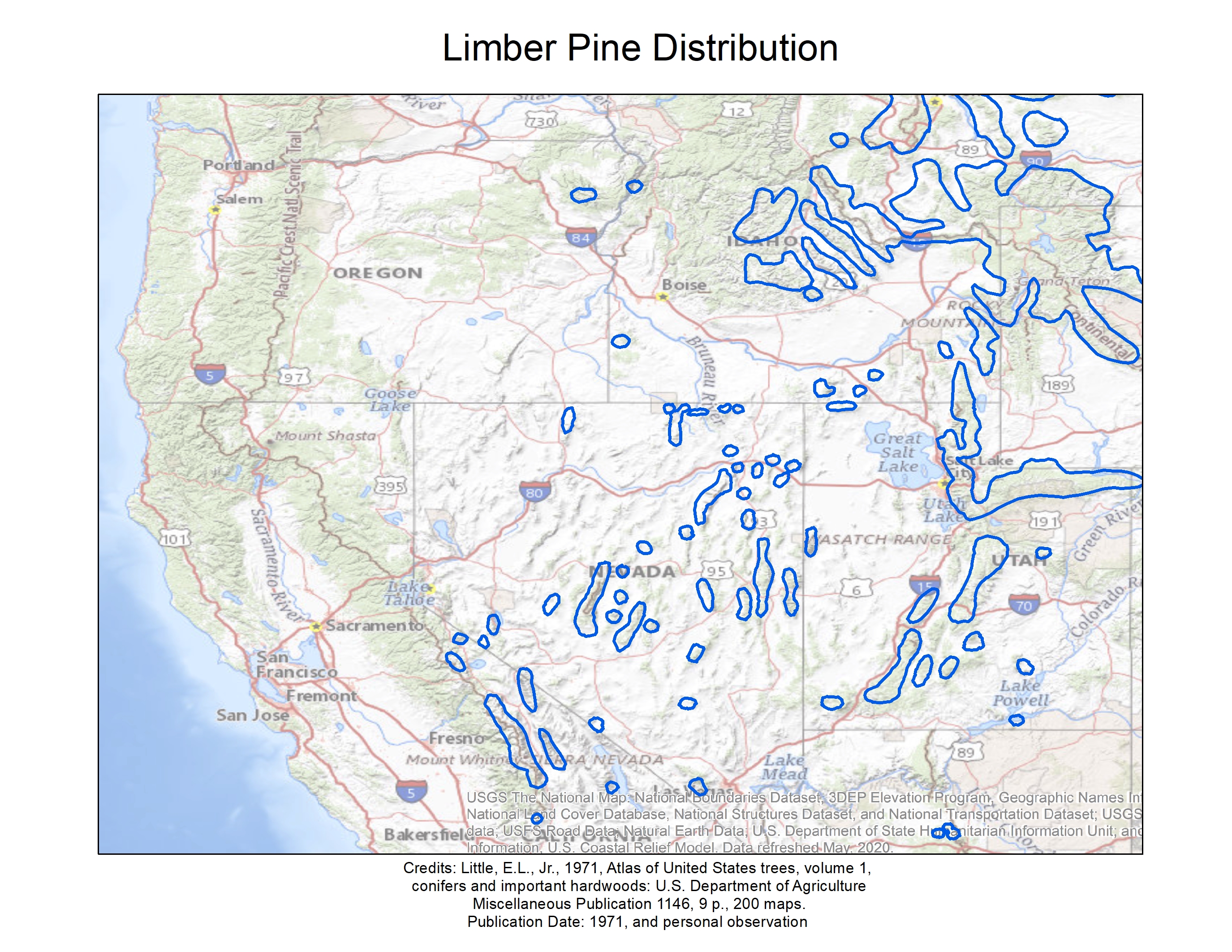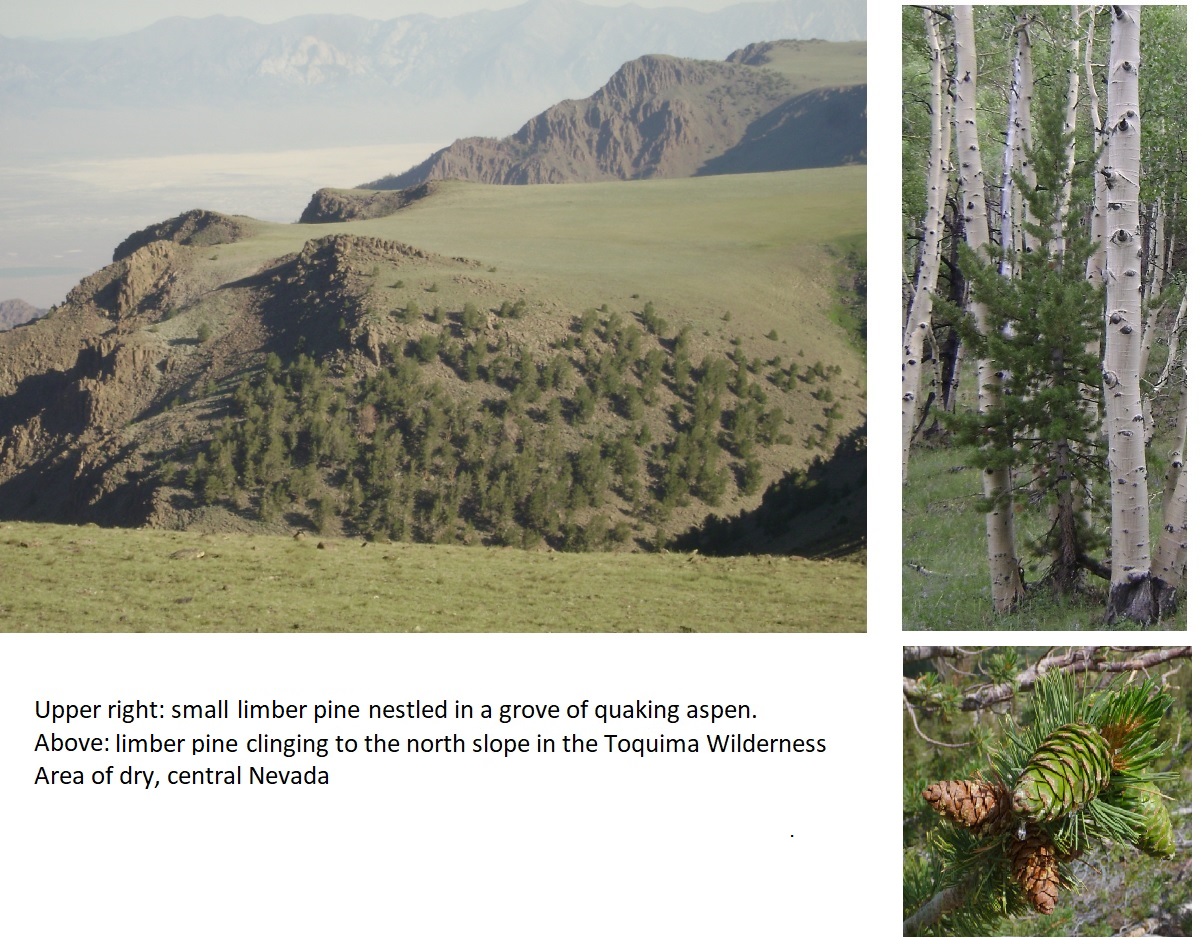Description:
The limber pine is a common high-elevation resident of most mountain ranges in the Great Basin and the Rocky Mountains. It also appears in the southern Sierra Nevada, but doesn’t appear in Oregon with exception of the Wallowa Mountains of northeast Oregon. It prefers the alpine areas and is often found on rocky, exposed slopes.
It usually has an asymmetrical shape. Even though young saplings have a fairly symmetrical shape, with age it develops a wide, irregular crown. It generally doesn’t exceed 80 feet tall.
Even though its 1.5 to 3.5 inch needles grow in groups of five, as does the whitebark pine, with which it is only distantly related, it makes it difficult to distinguish between the two species. The difference can be discerned fortunately by its cones. It has three to five inch yellowish cones, whereas the whitebark pine has two to three inch purplish cones. Its seeds (as are the whitebark pines) are a staple of the Clark’s nutcrackers and a few species of squirrels.
Like the whitebark pine it is being decimated by the pine blister rust and bark beetles in many areas.
Personal Observations:
In my searching for obscure conifer locations in Nevada to assist David Charlet in his compilation of Nevada conifers (and two books), I came across the limber pine in most of the larger mountain ranges of the state. It was often the only conifer found on those mountains other than the lower altitude single-leaf pinyon pine or the Utah juniper. However, in some of the northern and eastern parts of the state it was found with an assemblage of other conifers.
I found it at the higher elevations (9000-10000 feet) in the Toiyabe, Toquima, and Monitor mountain ranges of central Nevada.
It was also my constant companion in the Jarbidge, Ruby, Sweetwater, and Snake ranges, testimony to its widespread distribution.
Links:
https://www.conifers.org/pi/Pinus_flexilis.php


